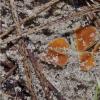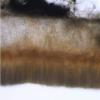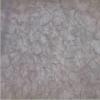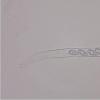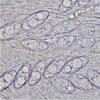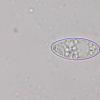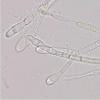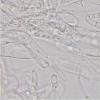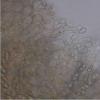
17-01-2013 09:32
Salvador TelloHola a todos.Este ascomiceto estaba en una zona de

16-01-2013 20:47
Jan EcksteinDear all, I am preparing a manuscript about Lampr

13-01-2013 03:46
 John Plischke
John Plischke
Hello,I found some Tubaria furfuracea today and t

16-01-2013 22:43
Peter ThompsonHappy New Year to you all.I have found a sample of

15-01-2013 22:43
Bonsoir, Good eveningI found this species on a cul

16-01-2013 01:08
Hi to all: Though I do not know his anamorph and I

12-01-2013 18:20
Gernot FriebesHi,in the above mentioned book there should be a d
Ascomiceto naranja
Salvador Tello,
17-01-2013 09:32
Este ascomiceto estaba en una zona de dunas cerca de la costa en el sur de españa, bajo Pinus pinea.
Apotecios de hasta 1 cm que crecía en el suelo. Ascas no amiloides de Me = 217,1 x 15,2 µm ; Qe = 14,4.
Paráfisis septadas, ramificadas y algunas con el ápice muy engrosado. Esporas lisas hialinas, generalmente con dos gútulas grandes y otras más pequeñas, de Me = 22,3 x 10,3 µm ; Qe = 2,2.
¿Alguien me puede decir por donde buscar?
Gracias.
Saludos.
Salvador.
Michel Hairaud,
17-01-2013 09:37

Re : Ascomiceto naranja
Hi Salvador,
Did you consider Leucoscypha patavina ?
Amitiés
Michel
Did you consider Leucoscypha patavina ?
Amitiés
Michel
Salvador Tello,
17-01-2013 09:57
Re : Ascomiceto naranja
Gracias Michel.
Si que parece ser L. patavina, aunque las esporas parecen algo pequeñas.
Saludos.
Salvador.
Si que parece ser L. patavina, aunque las esporas parecen algo pequeñas.
Saludos.
Salvador.
Illescas Tomás,
17-01-2013 09:57

Re : Ascomiceto naranja
Hola, Salvador.
Aunque las medidas esporales se quedan un poco pequeñas, yo creo que cuadra bien con Leucoscypha patavina, como te comentaba Michel.
Saludos,
Tomás Illescas
Bonjour, Salvador.
Aunque las medidas esporales se quedan un poco pequeñas, yo creo que cuadra bien con Leucoscypha patavina, como te comentaba Michel.
Saludos,
Tomás Illescas
Bonjour, Salvador.
Bien que les mesures esporales semblent un peu petites, je crois qu'on peut Nommer ta récolte sans des problèmes comme Leucoscypha patavina, comme te commentait Michel.
Amitiés,
Tomás Illescas
Thomas Læssøe,
17-01-2013 13:09
Re : Ascomiceto naranja
To me it appears to be too orange of L. patavina :-)
cheers
cheers
Salvador Tello,
17-01-2013 16:06
Re : Ascomiceto naranja
Gracias a todos.
En un principio no le había visto pelos en el margen del apotecio y estaba perdido, pero en una segunda vista ya he logrado encontrarlos, pongo una foto.
Puede que las esporas sean pequeñas por que no estén maduras, puesto que había pocas fuera de las ascas.
Saludos.
Salvador.
En un principio no le había visto pelos en el margen del apotecio y estaba perdido, pero en una segunda vista ya he logrado encontrarlos, pongo una foto.
Puede que las esporas sean pequeñas por que no estén maduras, puesto que había pocas fuera de las ascas.
Saludos.
Salvador.

